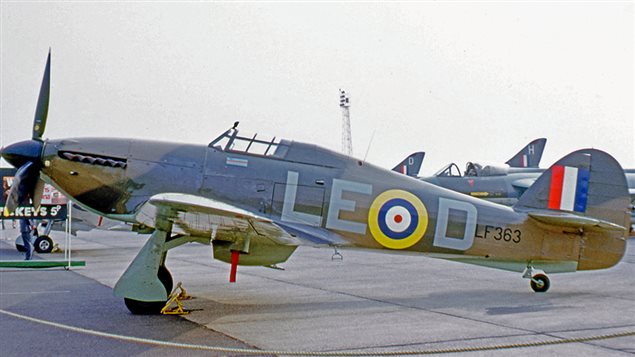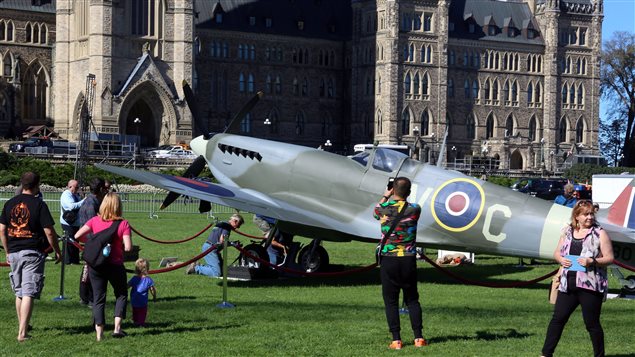It was a glorious day in Canada’s capital Ottawa this Sunday, the 20th, as the sun shone down on crowds gathered for the 75th anniversary of the Battle of Britain.
The air war over the channel and England itself lasted officially from July 10 to October 31, 1940.
Members of Canada’s Royal Canadian Air Force, and Air Cadets marched alongside RCAF veterans as elderly veterans of the Second World War looked on to commemorate the RAF and RCAF “finest hour”.

When France collapsed to the German forces in 1940, Britain stood firm against them. Many Canadians, and those from other parts of the Empire, had already arrived in Britain to aid the her defence. Many of them were already fighting as members of the RAF.
In order to invade Britain, the Germans knew they first had to gain air superiority and defeat the RAF.
The Battle of Britain is deemed to have begun in the channel in July as the Germans attacked coastal shipping and the RAF sent up the few machines and men they had to repluse the attackers.
In August, the attack against RAF airfields began in an attempt to give the Luftwaffe dominance in the skies over Britain as a prelude to invasion, and “Operation Sealion”
As the few fighters, airmen, and ground crew struggled to repulse the swarms of attackers and keep the planes flying, and holding their own against the larger Luftwaffe, Churchill gave a morale lifting speech on August 20,
“The gratitude of every home in our island, in our Empire and indeed throughout the world, except in the abodes of the guilty, goes out to the British airmen who, undaunted by odds, unwearied in their constant challenge and mortal danger, are turning the tide of the world by their prowess and their devotion.
Never in the field of human conflict was so much owed by so many to so few. All hearts go out to the fighter pilots, whose brilliant actions we see with our own eyes day after day…”

Within days, the German attacks increased and the RCAF No 1 Hurricane squadron was in the thick of things along with the mostly Canadian RAF 242 squadron (later 401 squadron) and the RCAF No 1 squadron.
In early September the Luftwaffe switched from the airfields to attacking London and British cities.
The Battle of Britain reached it’s peak on September 15 when over a thousand planes from the two sides met in the skies in a fiery duel.
The air battle as a prelude to a German landing in England dwindled thereafter, and on October 12, Hitler called off the planned invasion.
Twenty-three Canadian pilots lost their lives in the defence of the island. Three members of No. 1 Squadron received the Distinguished Flying Cross for their efforts during the Battle of Britain: the commanding officer, Squadron Leader Ernie McNab; his second-in-command, Flight Lieutenant Gordon Roy McGregor; and Flying Officer “Dal” Russel.
Two Canadian groundcrew were recognized for their contribution to the Battle of Britain: Flight Sergeant John R. Burdes was awarded a British Empire Medal and Flight Sergeant Cecil M. Gale was mentioned in dispatches.
Battle of Britain Sunday is commemorated on the Sunday following the 15th of September.







For reasons beyond our control, and for an undetermined period of time, our comment section is now closed. However, our social networks remain open to your contributions.